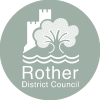Types of trees to include in a Community Orchard may be, but are not limited to, apples, cherries, greengages, pears, plums, walnuts and quinces. The layout and species to include will depend on the size and type of land available.
Many trees can be grown successfully in different types of soil, but specific varieties have unique requirements, so it will benefit you to know what type of soil you have on the land and to plan accordingly. Individual species may also have different requirements concerning sunlight, drainage, soil depth and frost.
We recommend guidance on appropriate species and layout is sought from a specialist, such as Natural England’s Woodland Creation service (woodlandcreation@naturalengland.org.uk), and that you refer to the advice available from relevant websites such as The Orchard Project or Traditional Orchards Project (People’s Trust for Endangered Species).
You will need to ensure a minimum distance of 4-5 metres between each tree, with these ideally planted where they will have light and space to thrive for the next 20 years. The layout of the orchard should be accessible by all and allow you to easily water your young trees regularly.
Careful selection of varieties can spread your fruit/nut harvest across the season and/or give you a range of colours and flavours. Applicants are encouraged to plant local Sussex fruit varieties, which are not only more interesting than those available in supermarkets but will also be more significant to the community. Further information on local apple varieties can be found at Sussex apples – Brighton Permaculture Trust.
Most cultivated fruit and nut trees do not come from a seed, but from uniting them with a piece of rootstock which is known as budding and grafting. The rootstock determines the final size of the tree, general growth, and character. If the orchard is for a school or play area, you could consider some dwarf trees which are easier for young children to reach. Also, consider that nut trees may not be suitable for such an environment due to allergens.
We recommend that semi-vigorous rootstock trees that are at least two years old are planted as part of your orchard, to optimise establishment and ensure quick fruit production.
Most plant nurseries will stock a range of trees, providing details on their size and form. To be eligible for a Coronation Community Orchard Grant, trees must be sourced from suppliers who can demonstrate they can meet the Plant Health Management Standard. Eligible suppliers can be found in the Plant Healthy Directory.
Consider how your community orchard could benefit the surrounding environment, both for nature and the local community, for example by including ‘bug hotels’, benches or shelters.
Ongoing maintenance and especially watering during the first few years are essential to the survival of the young trees, therefore access to water should be considered in site selection and layout, as well as how the orchard floor will be managed.
Community orchards should be inclusive and accessible, providing a community asset to all, regardless of their disability, race, gender, sexual orientation, age, religion, or belief. The Sensory Trust has produced outdoor accessibility guidance showing how to make the outdoors accessible for everyone, which may be helpful to consider: Outdoor Accessibility Guidance by Sensory Trust (Formerly Countryside for All).

